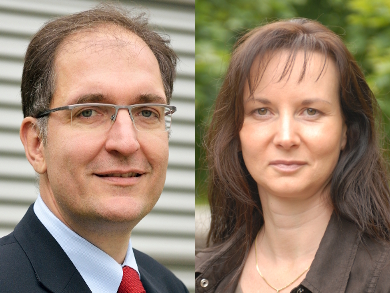Dr. Susan Wilkinson, Deputy Editor for the European Journal of Organic Chemistry, talks to Professor Beate Koksch, Freie Universität Berlin, Germany, and Professor Peter Seeberger, Max Planck Institute of Colloids and Interfaces, Potsdam, Germany, about their article on the synthesis of fluorinated amino acids recently published in the European Journal of Organic Chemistry.
The team has developed a protecting-group-free and semi-continuous process for the synthesis of racemic fluorinated α-amino acids from fluorinated amines. The flow synthesis begins with a photooxidative cyanation of a fluorinated amine to give the corresponding fluorinated α-amino nitrile. This is followed by acid-mediated nitrile hydrolysis to give the desired racemic fluorinated α-amino acid.
Could you briefly explain the focus and findings of your article?
We have developed a novel process to continuously produce a wide range of fluorinated amino acids. This process is particularly advantageous as it is not necessary to purify any intermediates and it allows for large-scale production of the target molecules. The inherent advantages of flow chemistry allowed us to perform chemistry outside the boundaries normally encountered, providing us with an efficient route to these important targets.
What is the main significance of your results?
Fluorinated amino acids are used to study and engineer biopolymers, but broader use has been impeded due to their very limited availability. Challenging multi-step syntheses are required to make the compounds in question and so only a few fluorinated amino acids are commercially available to date. Our process makes many fluorinated amino acids readily accessible on a large scale and thus paves the way for applications of these building blocks in medicinal chemistry, protein engineering, and materials sciences.
Why was your attention focused on fluorinated compounds?
Fluorine is part of many drugs, crop protection agents and advanced materials. The incorporation of fluorine is now a standard strategy for modulating the properties of chemical leads. Its unique stereoelectronic properties arise from an unprecedented combination of size, very low polarizability and a strong inductive effect. This makes fluorinated organic molecules often more stable than non-fluorinated derivatives. Fluorine has a strong impact on the physicochemical properties of molecules such as hydrophobicity, polarity, reactivity and conformation that influence transport properties and the half-life of drugs in an organism.
What is the broader impact of your paper for the scientific community?
This work opens up access to to fluorinated compounds, which are either challenging and/or dangerous to produce or otherwise inaccessible. This continuous flow set-up represents a more facile method to produce these valuable compounds. As a result, a wider range of scientists can incorporate these compounds into their research, providing opportunities that were previously not open to the greater scientific community.
Access to sophisticated building blocks is the bottle-neck in medicinal chemistry and materials science alike. With straightforward methods for building-block synthesis, it is now up to the imagination of chemists to utilize the fluorinated building blocks to create novel compounds of interest.
How did your collaboration on this project start?
The Koksch laboratory has a long-standing interest in studying the impact of fluorinated amino acids on protein structure and function. Based on fundamental insights, the Koksch group creates novel function from first principles. The Seeberger group has applied continuous flow chemistry to access complex molecules. With access to fluorinated amino acids being a limiting factor in protein design, we aimed at removing this bottle-neck by employing a method that allows for handling very unstable intermediates quickly even on a large scale.
- Flow Synthesis of Fluorinated α-Amino Acids,
Stella Vukelić, Dmitry B. Ushakov, Kerry Gilmore, Beate Koksch and Peter H. Seeberger,
Eur. J. Org. Chem. 2015, 3036–3039.
DOI: 10.1002/ejoc.201500300




